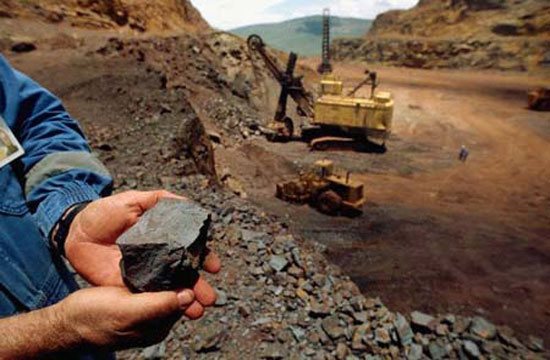The key raw materials in steelmaking include iron ore, coal, limestone, and recycled steel (not extracted). Actual steel is mostly iron ore and less than 2% carbon, the other materials are used in the manufacturing of crude steel. Iron ore is mined in about 50 countries (worldsteel association, 2014).
Nearly all of the iron ore that is mined, specifically about 98%, is used to produce steel. 5% of the Earth’s crust is made up of iron oxides, or ores, and iron is 100% recyclable and reusable (worldsteel association, 2014). Steel has a multitude of applications throughout the world, so it makes sense as to why it is one of the “hottest” commodities. According to the worldsteel association, “The majority of iron ore is mined in Brazil, Australia, China, India, the US and Russia…most iron ore is extracted in opencast mines in Australia and Brazil, carried to dedicated ports by rail, and then shipped to steel plants in Asia and Europe,” (2014). Iron ore is mined throughout the world, and it has an impact on the workers in each place.

([Iron Ore Mining])
It is well-know that miners do not operate in the safest conditions. Mining jobs in general can be very dangerous both acutely and chronically. Underground miners are at risk to the tunnels caving in, causing death immediately or causing the workers to become trapped underground, which could also be fatal. Iron ore miners, specifically, are at risk for lung diseases. Lung diseases are the major occupational diseases that result from working with iron ore dust (Oliveira, Cacodcar, and Motghare, 2014). The toxicological properties of iron ore dust come from the iron oxide and silica in the dust, and these can cause an onset of lung diseases over time. The amount of time it take to develop lung disease depend on the amount of the dust a person is exposed to. Another occupational problem for miners is noise induced hearing loss, which is direct result of exposure time to hazardous noise levels, (Oliveira et al., 2014). These are some of the top occupational hazards, but there are many others, all of which will directly impact the families of the mine workers.
Barring the occupational hazards, mining for iron ore can be a fairly lucrative trade. According to Cecilia Jamasmie, mine employees earn $98,787 on average globally, (2013). This is almost the opposite of what someone might expect of the unethical diamond mining in Africa, in which the workers are terribly underpaid and they work in dangerous conditions. However, what you make depends largely upon the country in which you are employed.